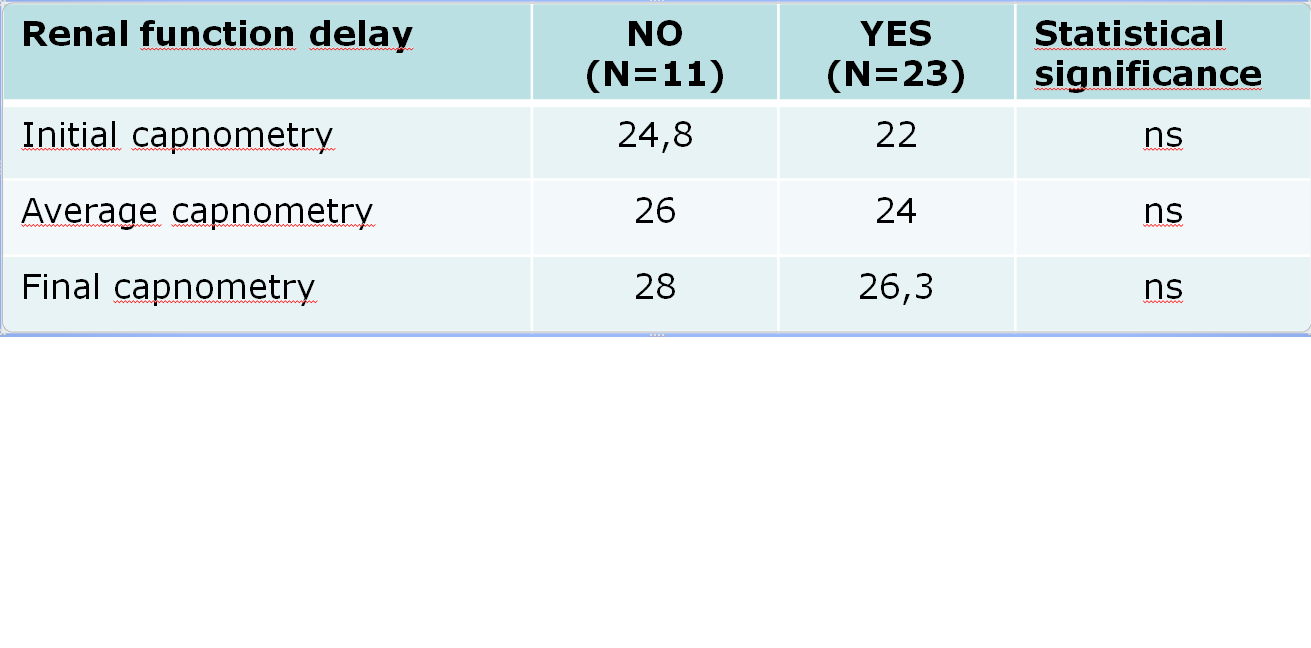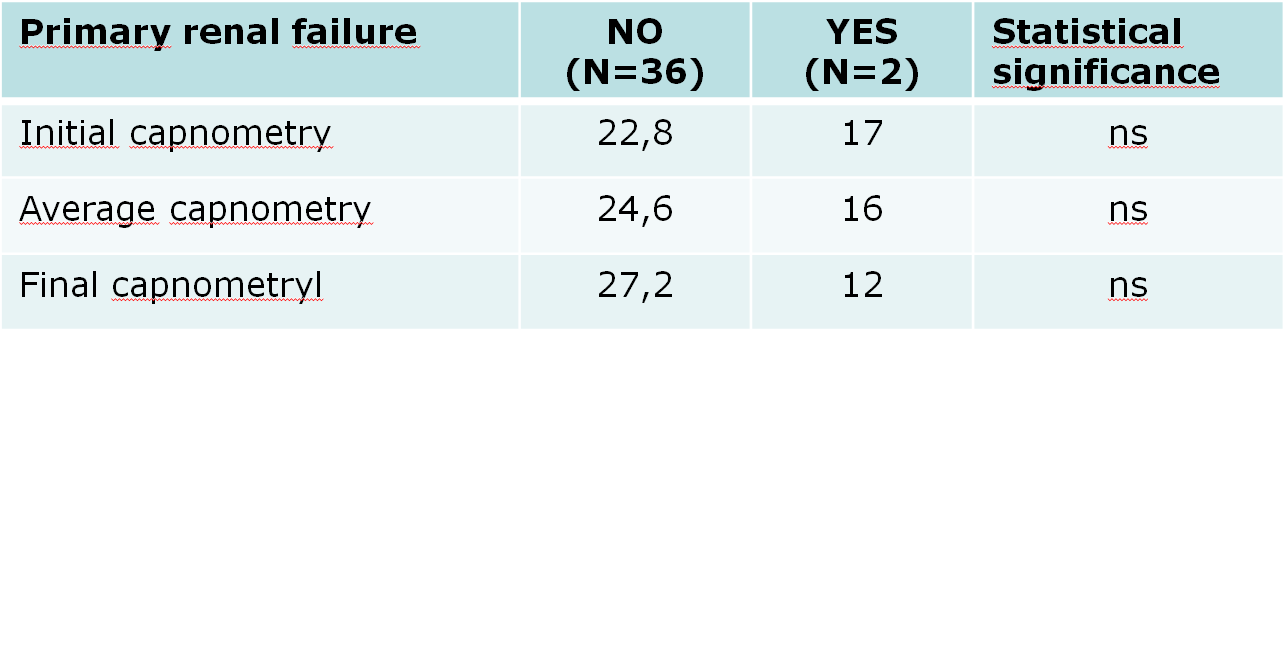Use of the Capnometry as a Renal Graft Evolution Predictor in Uncontrolled Cardiac Arrest Death Donors
Alicia Villar-Arias1, Alonso Mateos-Rodríguez2, Carlos Rubio-Chacón1, Esther González3, Natalia Polanco3, Eduardo Gutiérrez3, Amado Andrés-Belmonte3.
1Emergency Department SUMMA 112, Community of Madrid Health Department, Madrid, Spain; 2Community of Madrid Regional Transplants Office, Community of Madrid Health Department, Madrid, Spain; 3Nephrology Department, Doce de Octubre University Hospital, Madrid, Spain
Introduction: Capnometry is clearly related to ventilation and tissue perfusion. In several articles it has been postulated that levels of capnometry can indicate the organ grafts evolution of donors after dying by uncontrolled cardiac arrest.
Objective: To correlate the levels of capnometry during resuscitation and preservation with the evolution of renal grafts.
Methodology: Retrospective descriptive study from 2013 to 2017 based on the data collection from a series of potential donors transferred by SUMMA112 to Doce de Octubre University Hospital and the post-transplant evolution.
Results: There have been 60 donors in asystole and 40 patients received a kidney transplant.
Donors were mostly males (90%) as well as recipients (79%). The average age was 46 years in donors and 50 in recipients. No patient has presented an acute graft rejection.

Conclusion: A relationship between lower capnometry figures and, both renal function delay and primary renal failure has been detected; although without statistical significance due to the size of the study sample.
